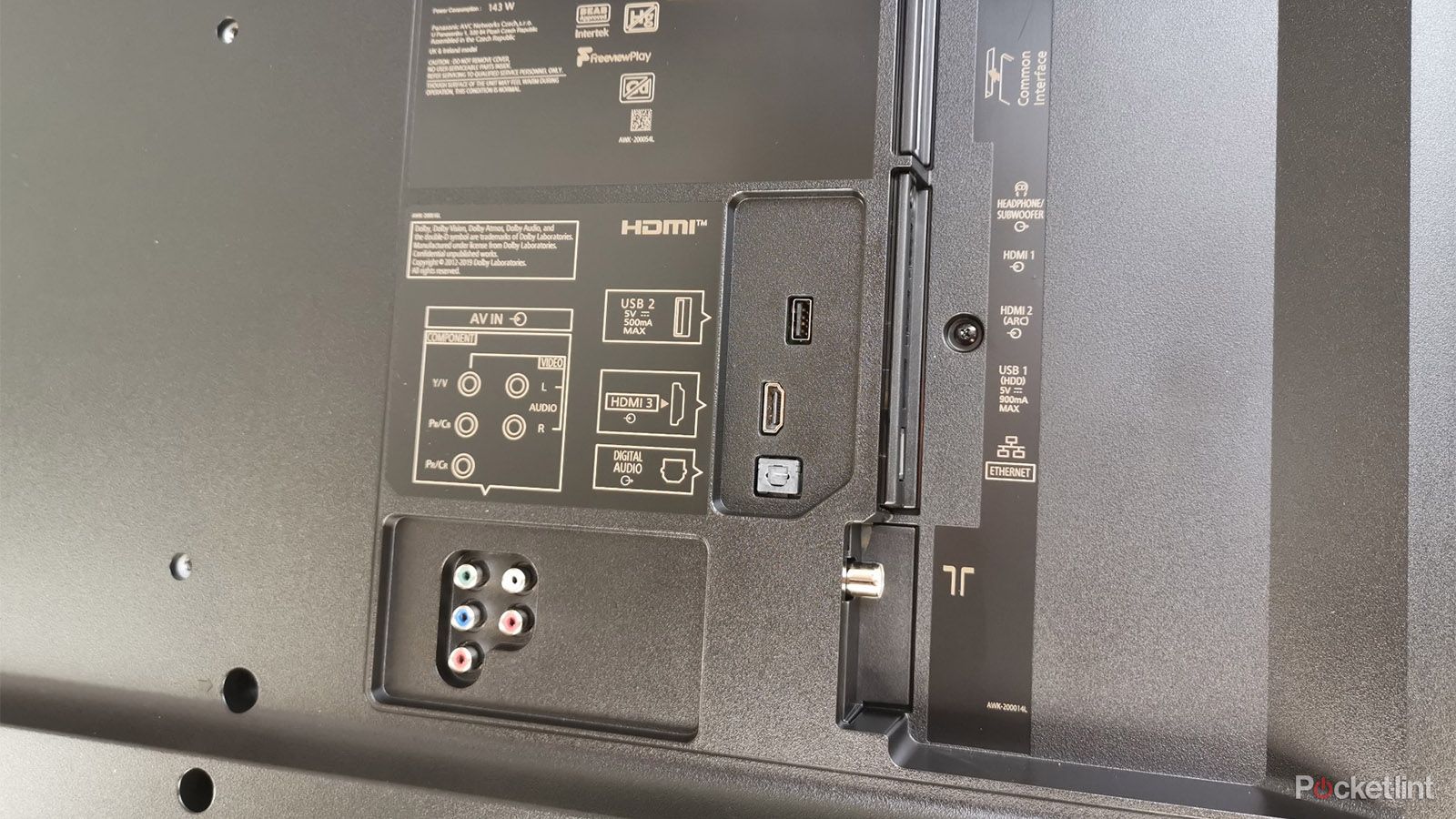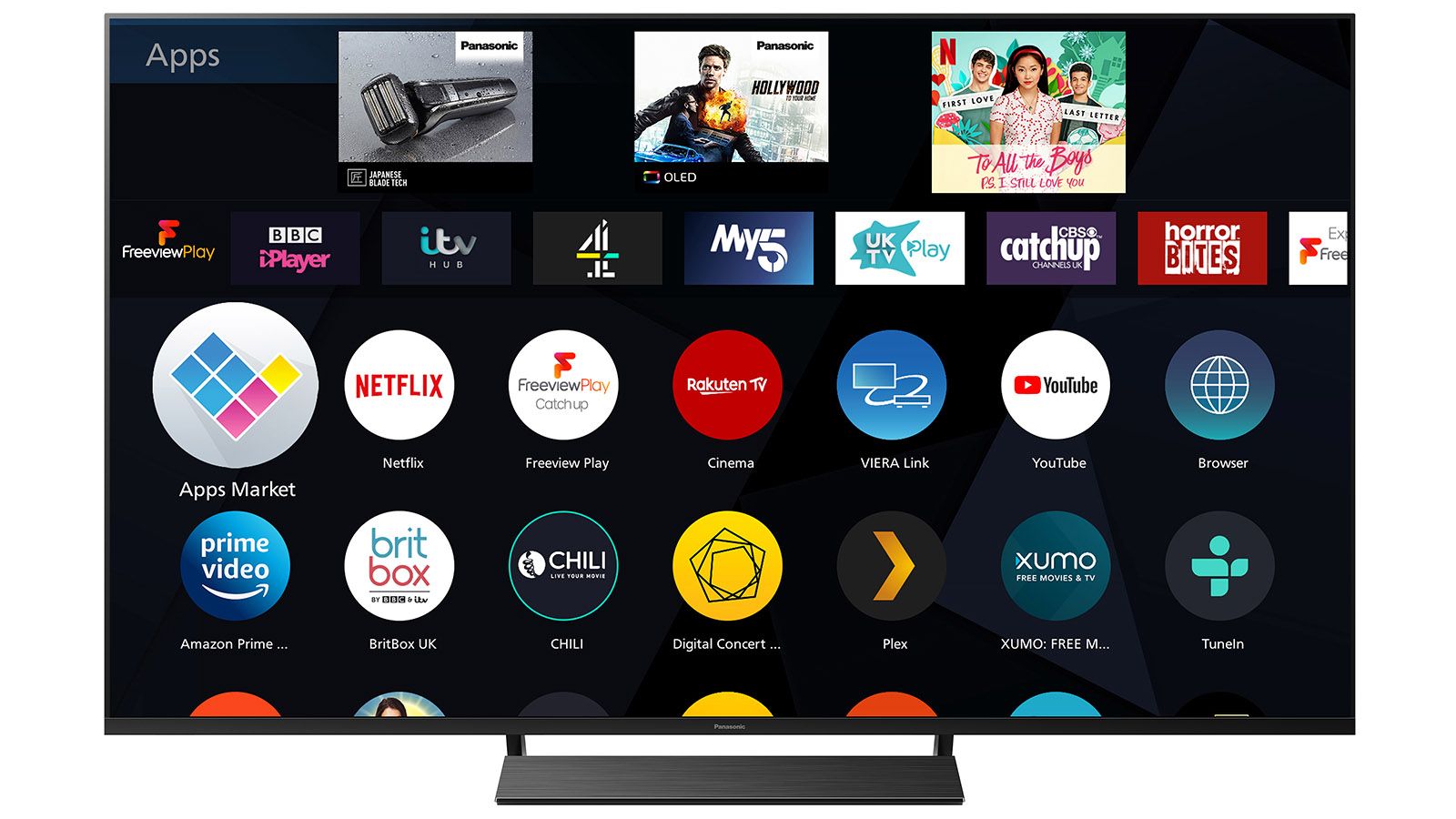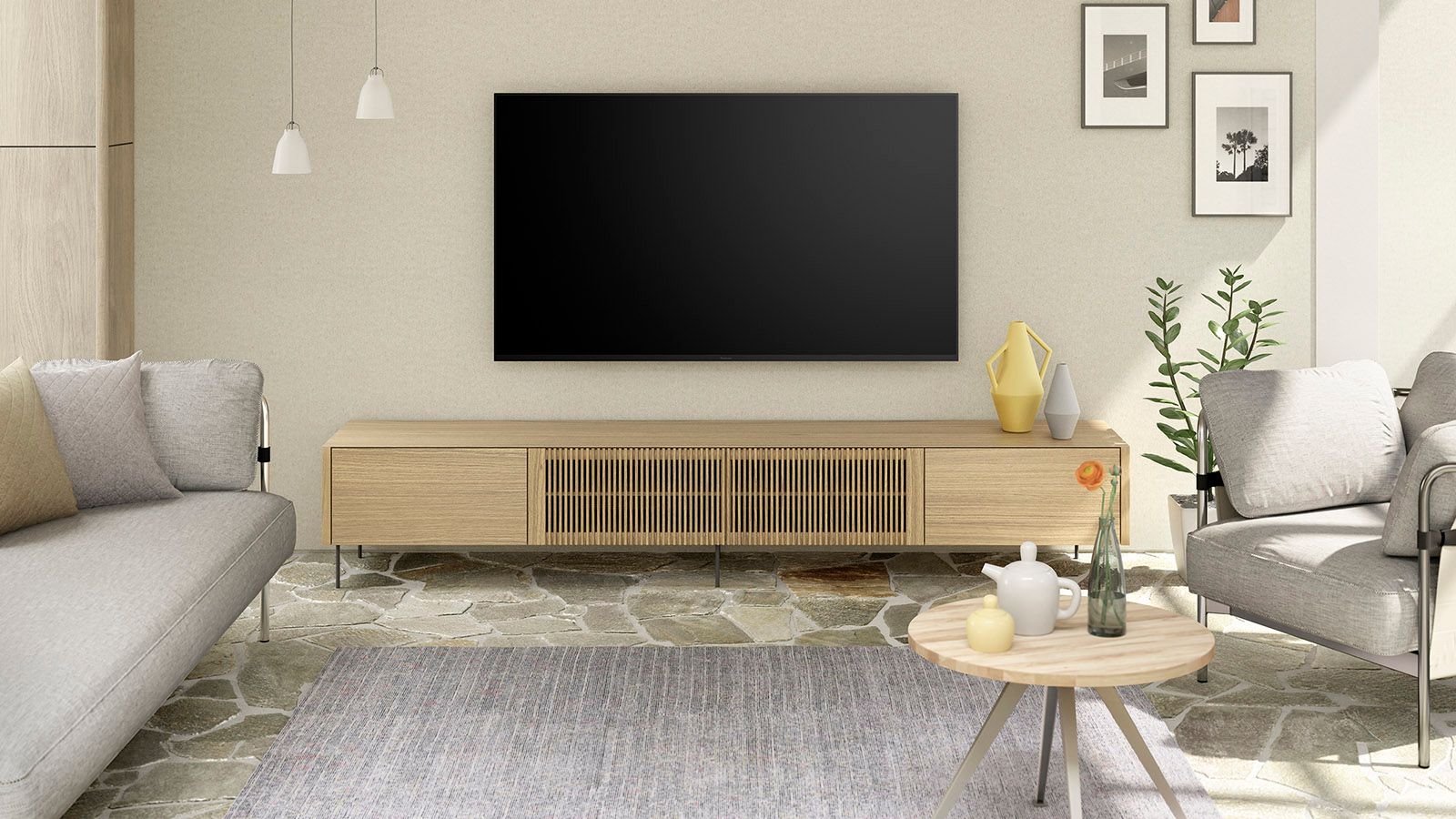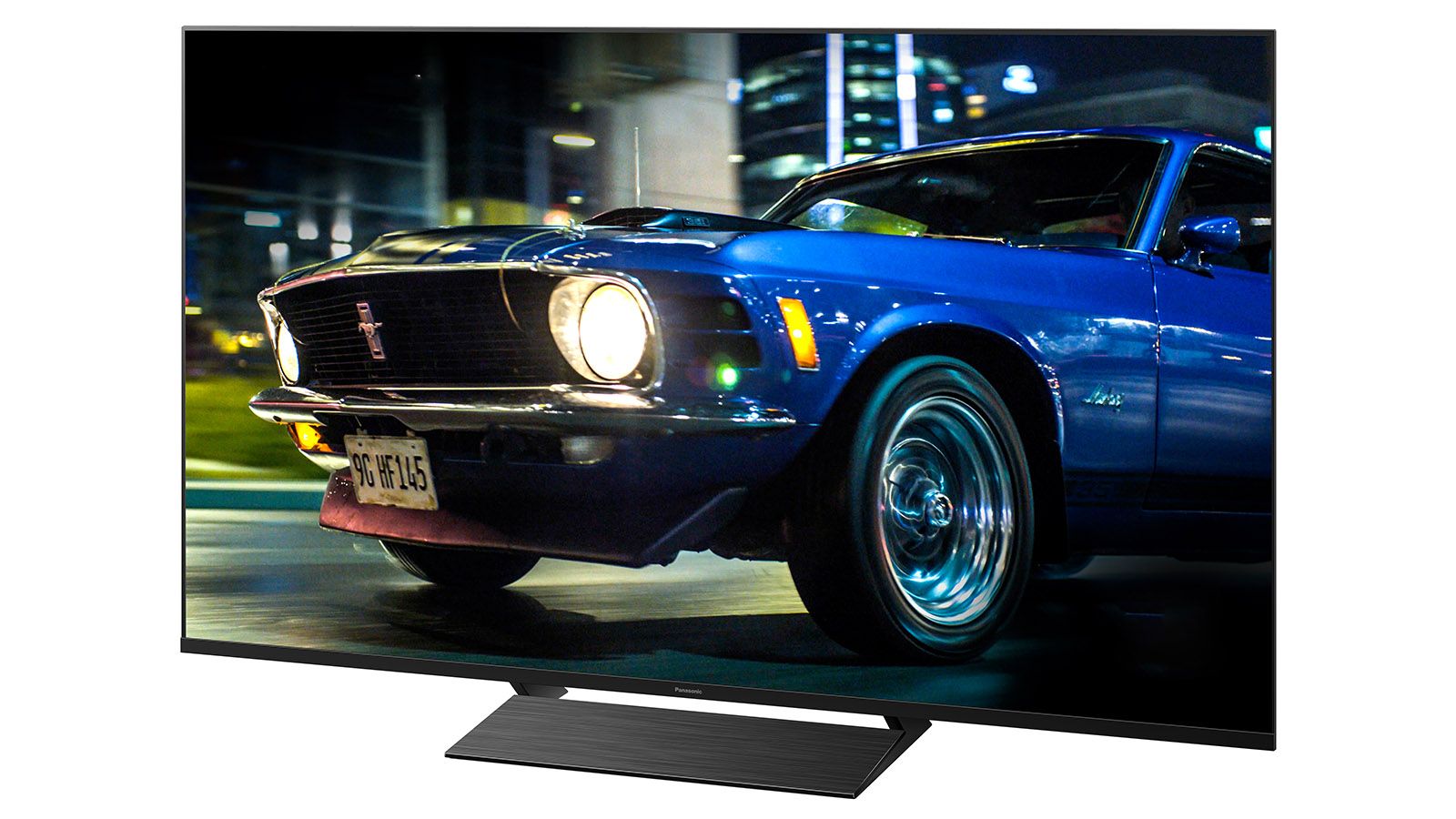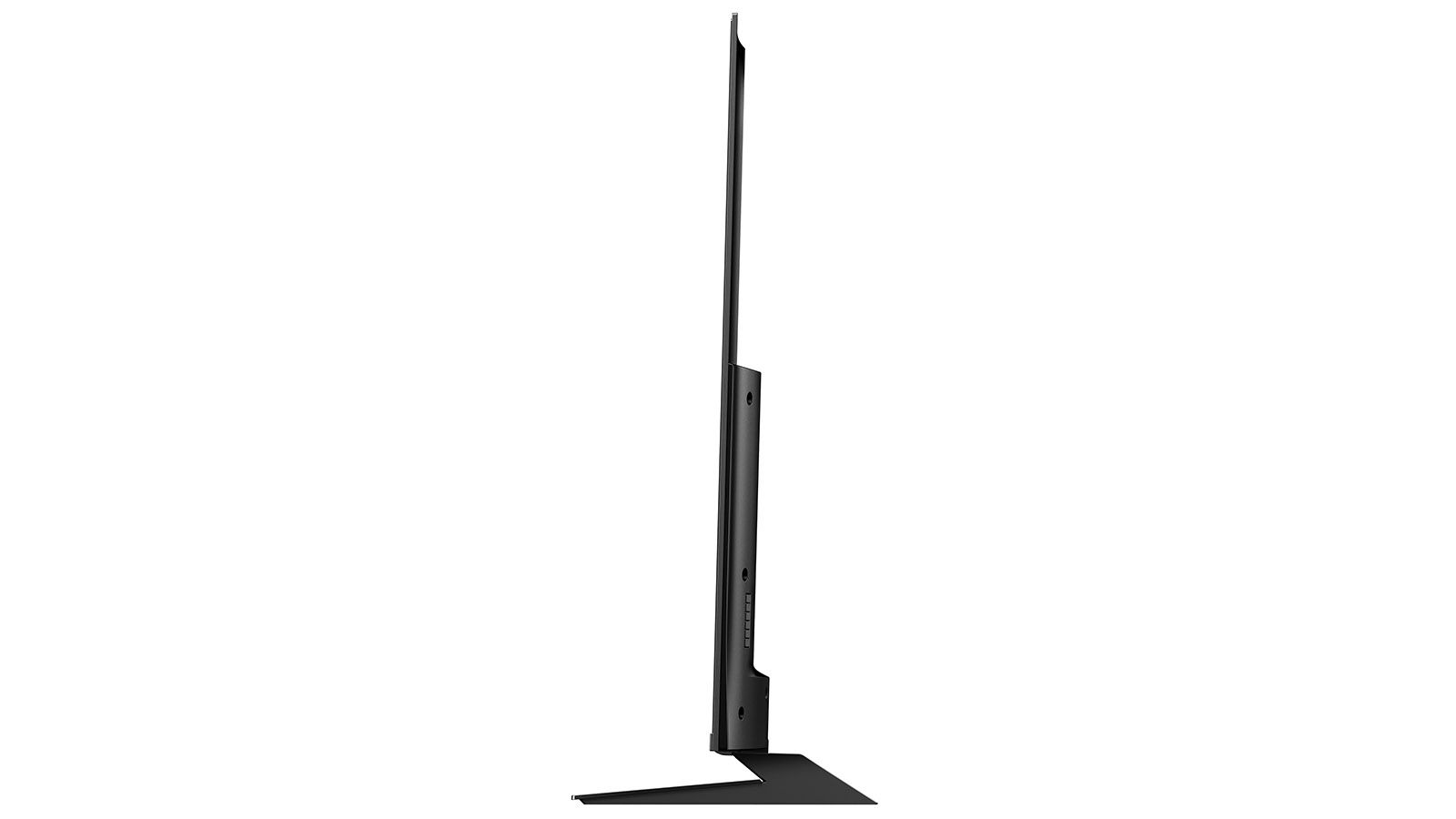The Panasonic HX800 is a mid-range LED LCD 4K TV with a formidable range of features, including still-rare universal HDR support - meaning high dynamic range in any of the formats going is supported here, for the best possible bright whites and deep blacks viewing.
As a refresh of the brand's GX800 best-seller of 2019, the HX800 comes in 40-, 50-, 58- and 65-inch screen sizes. We've reviewed the 58-inch model here, which represents something of a sweet spot in terms of size and pricing. Here's why it's a knockout.
Our quick take
The HX800 is an undeniably well equipped 4K HDR flatscreen with best-in-class HDR support and a connected OS that doesn’t delight in thinking itself smarter than you.
Picture quality is impressive, both in terms of HDR management and the lush vibrancy of its colours. The audio system warrants an upgrade, but with Dolby Atmos support ready to be unleashed, there are plenty of options.
We rate the HX800 a must audition for film fans and gamers alike. It really hits that cinematic sweet spot - the perfect blend of performance to price.
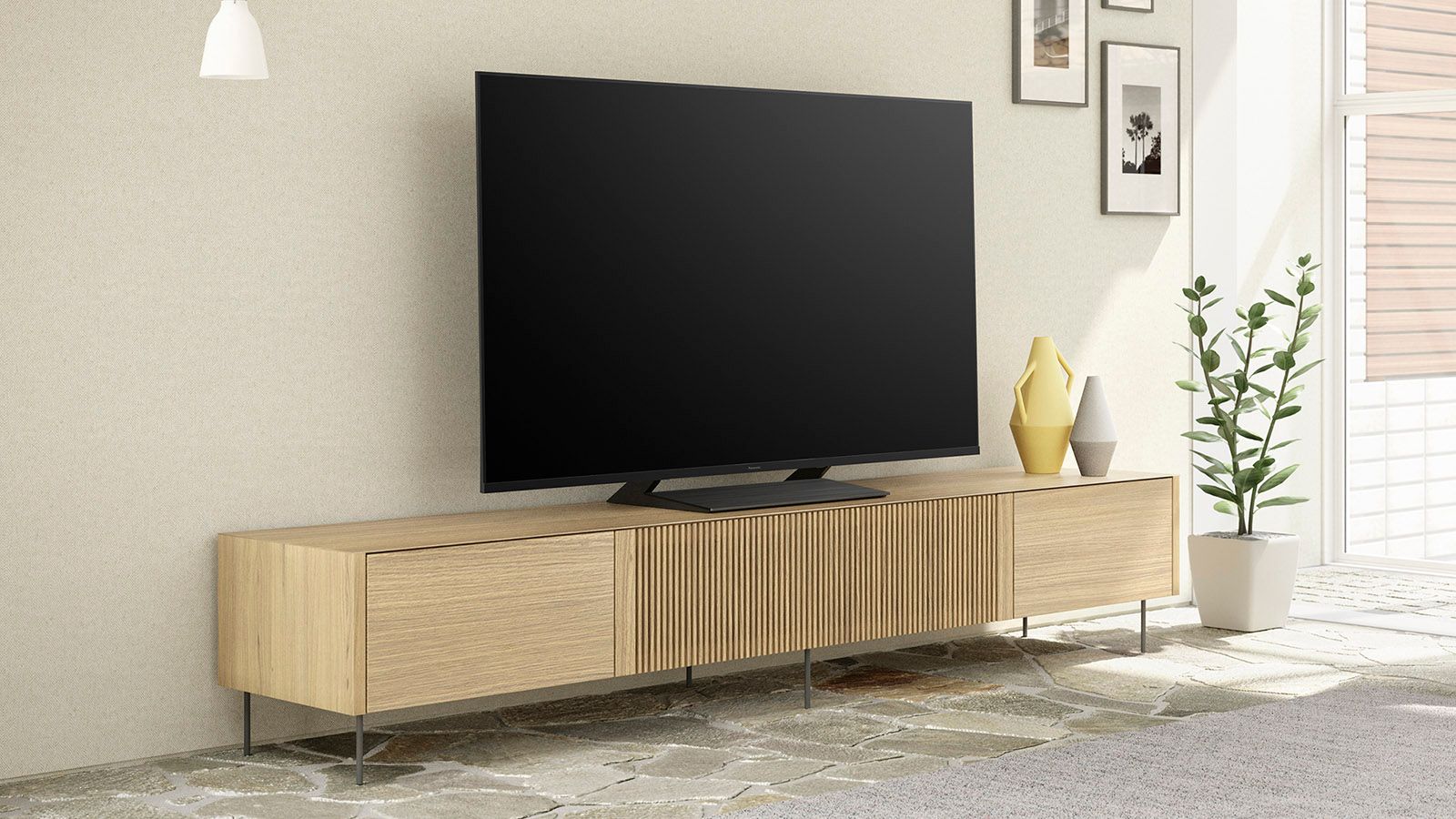
Panasonic HX800 4K TV - 5.0 / 5
| FOR | AGAINST |
|---|---|
|
|
Design
- 3x HDMI, 2x USB
- Wi-Fi & Bluetooth
Slim and chic, the HX800 looks swish even in standby. It adopts an interiors-friendly minimalist design, with attention to detail being high on the agenda. We like the way the panel sits on top of the frame, rather than within a bezel. A central pedestal makes it easy to accommodate.
When it comes to connectivity, it's limited to three HDMI ports, but there's support for ARC (Audio Return Channel) and ALLM (Auto Low Latency Mode), which triggers Game mode when a console is connected.
There's also component AV in, digital optical audio output, and two USBs ports. Wireless connectivity is solid - Bluetooth covers streaming from a smartphone and headphone pairing for late night listening; and there's dual band Wi-Fi too.
The set comes with a Freeview Play tuner, there's no satellite tuner option.
Smart OS
- Freeview Play
- My Home Screen v5.0
- Customisable Home screen
Panasonic's My Home Screen can probably be considered the least intrusive of all the big-brand smart TV platforms. It's slick and intuitive.
The Home page launches with Devices, Apps and Live TV shortcut buttons, but these can be customised by pinning additional services or sources direct for easy access. It's straightforward to customise.
Streaming service support is generally good. Netflix, Amazon Prime Video, Rakuten, Britbox, and YouTube lead the way, although Disney+ is noticeable by its absence.
Thanks to Freeview Play, there's a comprehensive line of mainstream catch-up TV too, including BBC iPlayer, All4, ITV Hub, My5, UKTV Play, CBS Catchup and Horror Bites. Smart home functionality comes via Google Assistant and Amazon Alexa voice control.
Picture performance
- HCX picture processor
- Dolby Vision, HDR10+, HLG HDR support
- Low latency Game mode
Sharp, bright and punchy - the HX800 picks up exactly where last year's GX800 left off. There's cinematic image quality that will woo film fans.
Once again, we're treated to a highly detailed, eminently cinematic display. Panasonic makes much of its ties to Hollywood, and this isn't (just) marketing bluster.
The HX800 has been fine-tuned by industry-leading colourist Stefan Sonnenfeld, who's been working with Panasonic for a number of years now. The result is a selection of picture presets that are extremely well honed, with excellent tonal balance and depth.
There's no change to the HCX image processor, it's the same as seen on its predecessor. So it can't lay claim to AI smarts or neural network jiggery pokery, but that doesn't stop it doing an excellent job with HD and 4K sources.
Image modes comprise Dynamic, Normal, Cinema, True Cinema, Custom and Sport. The Normal preset is the best everyday option. Of the two cinema modes, Pure Cinema is the one we'd naturally gravitate to - it has greater contrast and oomph.
There's a lushness to the colour performance of this set that's unusual for an LED screen. LED LCDs often struggle to present rich reds, as they tend to look a bit orangey, but that's not an issue here. This screen knows the difference between a tangerine and a red pepper.
When it comes to Dolby Vision, Netflix is the place to be. Viewing options comprise Dolby Vision Vivid, Dolby Vision Bright, and Dolby Vision Dark. In terms of sheer eye candy, we found it a coin toss between the Vivid and Bright modes. Both look great.
Universal HDR support means the screen works with both Dolby Vision and HDR10+ dynamic metadata standards, as well as regular HDR and HLG.
HDR peak brightness was measured at just under 450 nits, which is pretty decent for this class of set. The TV offers a bright average picture level for standard dynamic range, too, and has the ability to ping out specular highlights in an HDR source.
Dynamic tone mapping helps prevent detail clipping - it's a very cinematic picture when watched in low-light conditions. For the best results we'd suggest turning the adaptive backlight off.
As is evidenced by its thinness, the HX800 is an edge-lit LED panel, but it handles screen uniformly well. Even on this larger panel size, there's no really egregious splotches of light. That said, it obviously can't manage white highlights against a dark background quite as well as an OLED.
Gaming performance is outstanding. Input lag comes in at just 10.2ms (1080/60) in Game mode; this compares to 140ms in Normal mode.
Motion handling is similarly fine, thanks to Panasonic's much improved Intelligent Frame Creation (IFC) processing. We think it works best on its Min setting, as it doesn't introduce unwanted motion artefacts, yet retains picture clarity. For movies, it probably makes sense to turn interpolation off completely, although you'll see the panning judder which is native to the source.
Sound
- Dolby Atmos support
- 2x 10W power output
The screen has a built-in 2x 10W stereo sound system that's certainly good enough for everyday use. However, given that the HX800 is also Dolby Atmos compatible, you'll want to stream immersive audio out over HDMI to a compatible Dolby Atmos soundbar or home cinema system.
To recap
Filmic images more reminiscent of an OLED than LED LCD, multi-HDR support and killer game mode all make Panasonic’s HX800 a 4K set to lust after.

